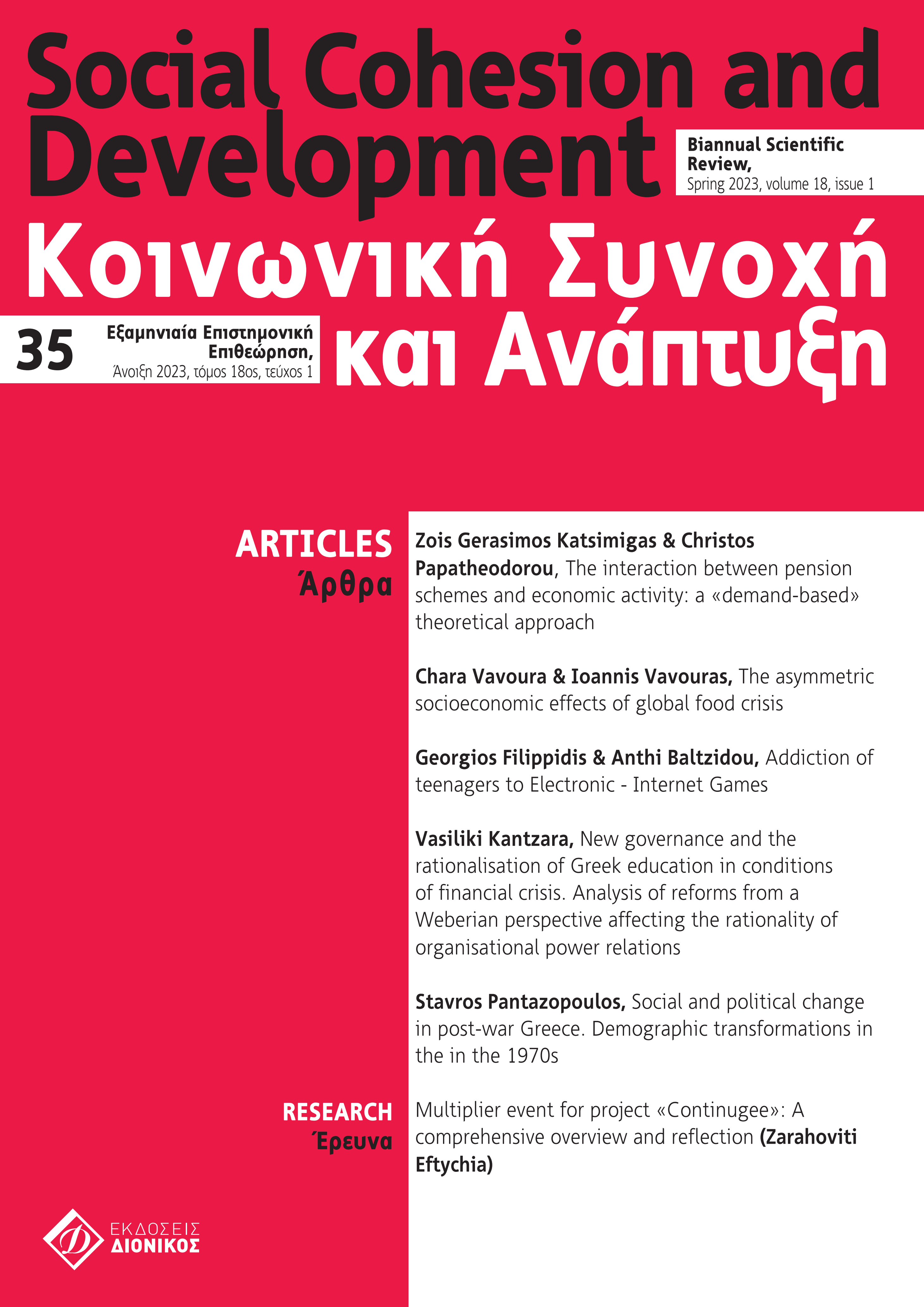Η αλληλεπίδραση των συνταξιοδοτικών συστημάτων με την οικονομική δραστηριότητα: μία «demand-based» θεωρητική προσέγγιση

Περίληψη
Ορμώμενοι από την πρόσφατη κεφαλαιοποίησή
της επικουρικής σύνταξης, αλλά και τις δημο-
γραφικές προβλέψεις γήρανσης και μείωσης του
πληθυσμού τις προσεχείς δεκαετίες στην Ελλάδα,
θα εντοπίσουμε και θα εξετάσουμε τους προσδι-
οριστικούς παράγοντες των συντάξεων των δύο
ασφαλιστικών συστημάτων (Pay-As-You-Go &
Fully Funded), την σχέση αυτών με την λειτουρ-
γική διανομή εισοδήματος, καθώς και την αλλη-
λεπίδραση τους με την εν γένει οικονομική δρα-
στηριότητα. Στόχος είναι η ανάδειξη της σημασίας
της από κοινού εξέτασης των συνταξιοδοτικών
συστημάτων με το μακροοικονομικό περιβάλλον,
ώστε να αποσαφηνιστεί η επίδραση τόσο των δη-
μογραφικών αλλαγών όσο και των πολιτικών μεί-
ωσης του δείκτη εξάρτισης του συνταξιοδοτικού
συστήματος και της κρατικής δαπάνης για συντά-
ξεις στην εν γένει οικονομική δραστηριότητα και
το δημόσιο χρέος.
Λεπτομέρειες άρθρου
- Πώς να δημιουργήσετε Αναφορές
-
Katsimigas, Z. G., & Papatheodorou , C. (2024). Η αλληλεπίδραση των συνταξιοδοτικών συστημάτων με την οικονομική δραστηριότητα: μία «demand-based» θεωρητική προσέγγιση. Κοινωνική Συνοχή και Ανάπτυξη, 18(1), 5–20. https://doi.org/10.12681/scad.37297 (Original work published 30 Ιούνιος 2023)
- Τεύχος
- Τόμ. 18 Αρ. 1 (2023): Νο 35
- Ενότητα
- Άρθρα

Αυτή η εργασία είναι αδειοδοτημένη υπό το CC Αναφορά Δημιουργού – Μη Εμπορική Χρήση – Παρόμοια Διανομή 4.0.
Οι συγγραφείς των άρθρων που δημοσιεύονται στην Κοινωνική Συνοχή και Ανάπτυξη διατηρούν τα δικαιώματα πνευματικής ιδιοκτησίας επί των άρθρων τους, δίνοντας στο περιοδικό το δικαίωμα της πρώτης δημοσίευσης. Άρθρα που δημοσιεύονται στην Κοινωνική Συνοχή διατίθενται με άδεια Creative Commons 4.0 και σύμφωνα με την άδεια μπορούν να χρησιμοποιούνται ελεύθερα, με αναφορά στο/στη συγγραφέα και στην πρώτη δημοσίευση για μη κερδοσκοπικούς σκοπούς και με δικαίωμα τροποποίησης μόνον με παρόμοια διανομή (αν αναμείξετε, τροποποιήσετε, ή δημιουργήσετε πάνω στο υλικό, πρέπει να διανείμετε τις δικές σας συνεισφορές υπό την ίδια άδεια όπως και το πρωτότυπο).


